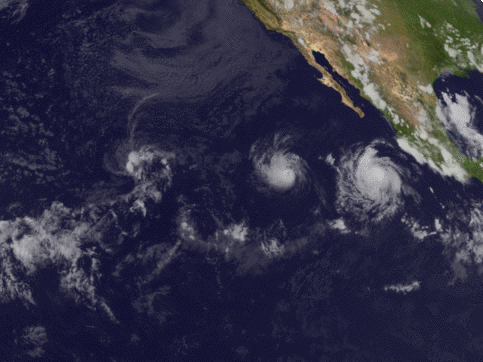What is the Fujiwhara Effect? Your questions explained

HOUSTON - You may have heard something regarding the Fujiwhara Effect discussed in the past couple of days as two storms, that are expected to become hurricanes move into the Gulf of Mexico.
RELATED: TS Laura, TD 14 pose potential hurricane threat to U.S. Gulf Coast
According to the National Weather Service, The Fujiwhara Effect is when two spinning hurricanes spinning in the same direction pass close enough to each other, they begin an intense dance around their common center.
If one hurricane is a lot stronger than the other, the smaller one will orbit it and eventually come crashing into its vortex to be absorbed.

This is an example between hurricanes Hilary and Irwin in the East Pacific in 2017.
MORE TROPICAL UPDATES FROM FOX 26
The two storms closer in strength can gravitate towards each other until they reach a common point and merge, or merely spin each other around for a while before shooting off on their own paths.
In some rare occasions, meteorologists say the effect is additive when the hurricanes come together, resulting in one larger storm instead of two smaller ones.
As Tropical Depression 14 continues to move into the Gulf and Tropical Storm Laura heads into the Gulf, the effect is highly unlikely to take place with these two storm systems.
SIGN UP FOR FOX 26 HOUSTON E-MAIL NEWS ALERTS
However, everyone living along the Gulf Coast of the United States should continue to monitor both storms heading into early next week.
The FOX 26 Weather Team is closely monitoring the two storms in the Gulf of Mexico and will have the very latest on-air, online, and on social media.
RELATED: CLICK HERE FOR YOUR HURRICANE QUICKLIST
You can also stay in the know by downloading the free FOX 26 Weather app by clicking here. The app includes the latest storm tracks for storms and provides alerts down to your location.

